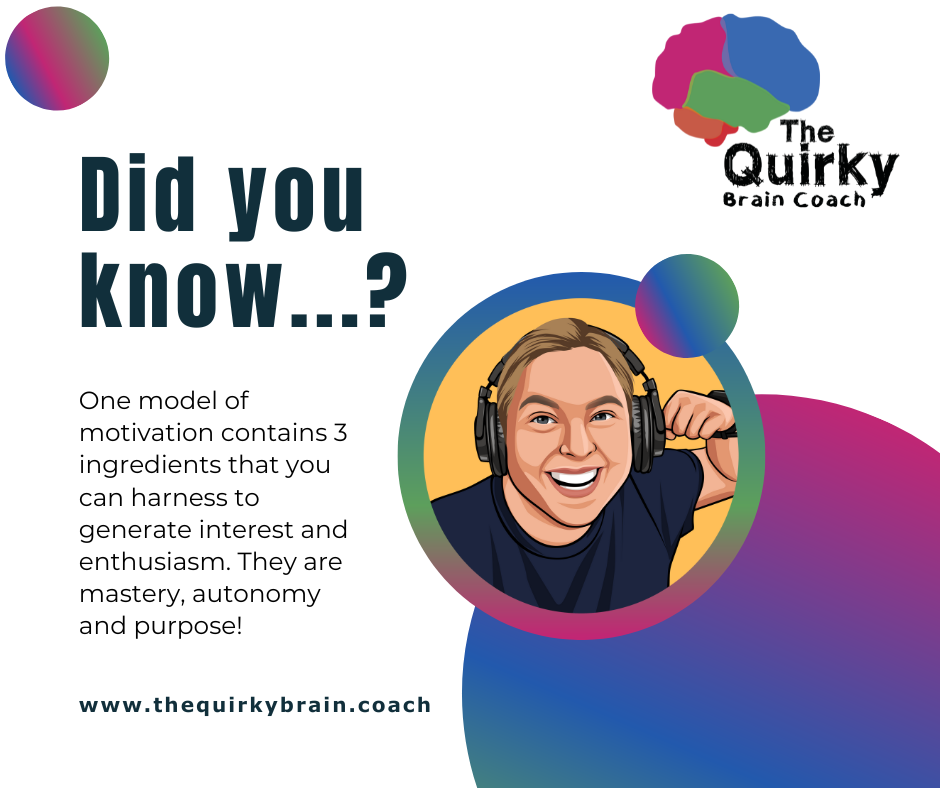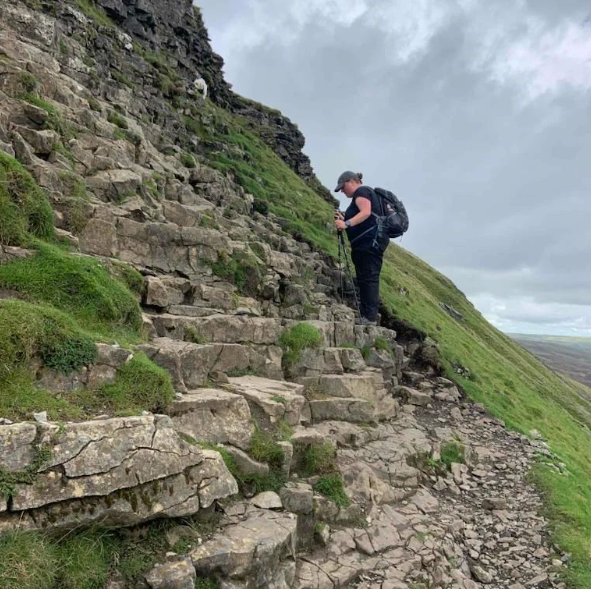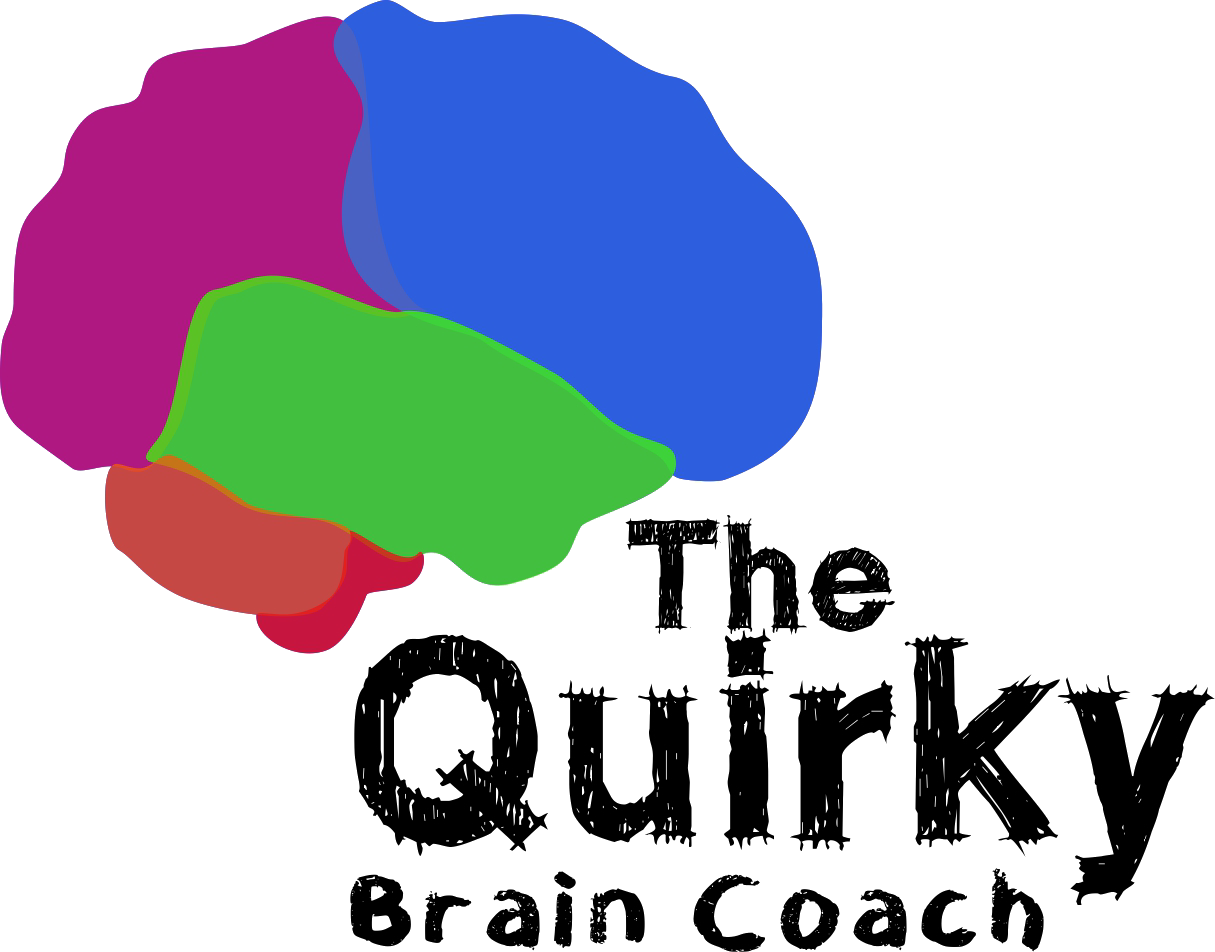How to create an amazing MAP of motivation by meeting your needs around tasks
I have a lot of coaching conversations with people about motivation. People tell me they’re low on motivation. They can’t get started – even with things they like. That it’s hard to stick at something, even if it’s initially fun and interesting. #ADHD #Autism #AuDHD
If this applies to you then this thread can help you start to understand three key ingredients that can be really helpful for driving your motivation over time. But what are those three ingredients? They are Mastery, Autonomy and Purpose, or “MAP needs”.

You can learn to take these needs and boost them to create your own roadMAP for driving your motivation to do things that feel hard at the moment.
Dan Pink’s model from his book “Drive” explains we have three psychological needs (mastery, autonomy, purpose) that must be met in order to feel motivated to take action. The idea is that if you can increase any missing or too-low MAP needs, you’ll feel more motivated.
Let’s take each of these needs to see what they mean.
Let’s start with mastery. For me, we generally feel motivated to do what we know about and what we know we can do. We don’t do what we don’t understand fully or have experience with, often.
People have their mastery needs met when tasks are
- within your skill level
- you have experience
- you have support/resources
- there is enough time to do well
- you have learned sufficient about how tasks work
So if there’s something you want to get motivated for, and you don’t experience enough feelings of competence and skill, your mastery levels are too low and this could put you off from starting. What do you need to have, learn or remember to help you increase mastery?
Autonomy is a big one for many ADHD or autistic adults. Some of us don’t like demands and need to feel like the captain of our own ship. If you feel bossed around, put upon, controlled or not “at choice” in any way, this can lower your motivation through unmet autonomy needs.
People experience feelings of autonomy that drive motivation when tasks are
- chosen
- authentic
- not micro-managed
- you set the agenda
- you choose the time frame
- you decide if you opt in or opt out
If you would like to do something but it feels more of a demand or there are external constraints imposed upon you, you may have an unmet autonomy need for that task. Consider this: how can I put my own spin onto the design of the task so I feel like it’s mine to own and run?
Purpose is really special. Purpose is about doing something because you believe it is good, right, interesting, enjoyable and important. Your purpose needs are met for tasks when you know what you’re contributing when you do them – and you wholeheartedly agree with the why.
Tasks meet purpose needs when they are
- aligned with your values
- carried out in line with your natural strengths
- don’t go against your beliefs
- feel authentic
- make some kind of contribution to yourself or others you care about
If your purpose needs aren’t met for a task, you can increase motivation by finding ways to remind yourself of the “big why” and all the benefits you or others could experience through doing what you want to do. Journalling and coaching can help you work these things out.
Let’s look at an example for all 3.
Take my coaching. I have mastery as I’ve learned it and have experience. I have autonomy, as I choose to do it and set my own agenda, doing it in my own way. I have purpose as I believe in coaching, and use it to help others like me.
With coaching as my work, my MAP needs are very well met, and so I am almost always motivated for tasks relating to coaching. To flip it around, let’s consider exercise, which is not something I was naturally motivated for.
I used to not be very fit or confident with exercise, so I didn’t have mastery. I felt I had to do it and others would “strongly encourage” me to engage in it. No autonomy there. I didn’t actually care very much about exercise a few years ago and it wasn’t a value, so no purpose.
By coaching myself with the MAP model. I created mastery by learning about hiking and getting support from friends to build experience. I chose hiking as my exercise and chose if/when I hiked, building autonomy.
From the science, I learned of the benefits of exercise on well-being and that did cause exercise to become a matter of purpose for me. Because I believe it’s important to find what is right for my brain and research how it all works so I can share that information with others in case it helps them. Purpose problem indirectly solved!
Now I hike regularly, thanks to the MAP model. In fact, I am walking to Everest Base Camp next week and it’s only thanks to the self-coaching work I did with the MAP model that this has come to be vaguely possible due to prior low motivation around exercise.
So, long story short: if you have something you’d like to do but you haven’t got the motivational oomph (yet), it could be time to use the MAP model to work out which of your needs aren’t met so you can build in what is needed to help you do the thing naturally and authentically.
If you’d like someone experienced in this psychological model to ask questions to help you find out your MAP needs for a task you’ve struggled with, you can reach out to me to work on this. I’ll hold space for you to think about what’s missing and how we can get you fired up.
Find me on yourcoach@thequirkybrain.coach or send a DM.
I’ll work out a time for a consult and send an agenda and request your accommodations for the call, as well as sending information about how we could work together. Reach out to build your MAP to light the motivational way forward. I can help. (If I got myself up the below mountain, I feel it’s fair to say I might just have what it takes to help you, too.)


